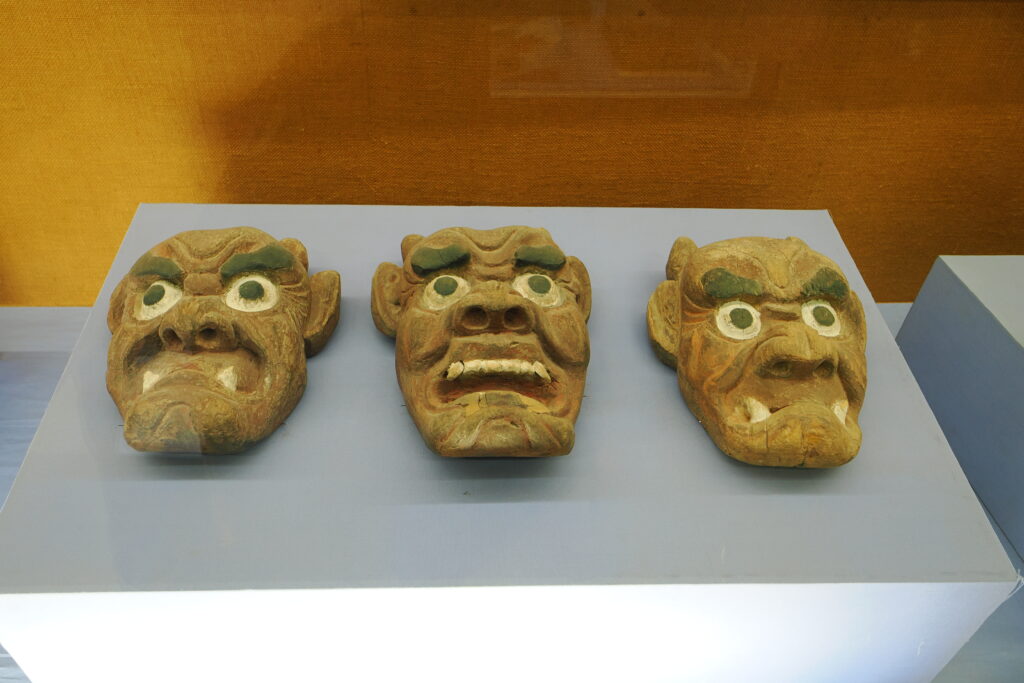Nyussupov Assylzhan
Recently, I had the opportunity to visit Ishigaki Island for a study trip, during which I
explored the local culture and traditions. One of the highlights of my trip was my visit to
the Yaeyama Museum, where I was able to learn about the history and culture of the
Yaeyama Islands.
The museum provided me with a unique insight into the local culture, history, and
traditions of the Yaeyama Islands. I was fascinated by the exhibits, which included
ancient artifacts, traditional costumes, tools, and masks used by the local people. The
museum also had informative displays and pictures that helped me understand the
history and culture of the islands.
During my visit, I learned about the importance of preserving and honoring local culture,
which is essential for achieving the Sustainable Development Goals (SDGs). By
preserving local traditions and customs, we can promote cultural diversity and
inclusivity, which are critical for building peaceful, just, and inclusive societies. Moreover,
preserving local culture can also contribute to economic growth and sustainable
tourism. Local cultures and traditions attract tourists, which can create job opportunities
and stimulate the local economy. In this way, preserving local culture can promote
economic growth and contribute to the SDGs.

It was interesting to see how the Yaeyama Museum has been successful in preserving
the local culture and traditions of the Yaeyama Islands. The museum has done an
excellent job of showcasing the unique history and culture of the islands, and providing
visitors with a comprehensive understanding of the local culture.
In addition to the exhibits, the museum also had a section dedicated to traditional music
and dance. Here visitors could learn about the different types of traditional music and
dance that are performed on the islands. I was amazed at the talent and skill of the local
performers, and it was clear that they were passionate about preserving their cultural
heritage.
The museum was also full of both charming and frightening masks. The masks were
used in traditional performances, such as the lion dance, which is a popular event on
the islands. The masks were beautifully crafted and painted, and it was fascinating to
learn about their significance and how they are used in local festivals.
One of the things that stood out to me about the masks was how they were used to tell
stories. Each mask had a unique story behind it, and the performers used the masks to
convey these stories to the audience. The masks were not just a form of entertainment,
but also a way to preserve and pass down local folklore and traditions.

Furthermore, the museum also had a section dedicated to local cooking, where visitors
could learn about the traditional dishes and ingredients of the Yaeyama Islands. This
was particularly interesting to me as I love to explore different cuisines and learn about
the history and cultural significance behind them.
Overall, my visit to the Yaeyama Museum was a wonderful experience that provided me
with a comprehensive understanding of the local culture and traditions of the Yaeyama
Islands. The museum has done an excellent job of preserving and promoting local
culture, and it is evident that the local community is proud of their heritage. I would
highly recommend a visit to anyone who is interested in learning about different cultures
and traditions, and I am sure that they will come away with a newfound appreciation for
the importance of preserving and honoring local culture. Preserving local culture is
essential for achieving the Sustainable Development Goals, as it promotes cultural
diversity, inclusivity, and economic growth. The Yaeyama Museum is a great example of
how preserving local culture can contribute to the SDGs, and it is clear that it has had a
positive impact on the local community. As travelers, it is our responsibility to respect
and appreciate local cultures and traditions, and by doing so, we can contribute to a
more peaceful, just, and sustainable world.



